Architects & Firms
El Besòs i El Maresme is not what most people envision when they think of Barcelona. The neighborhood lacks the meandering gothic quality of las Ramblas, and it falls outside Ildefons Cerdà’s chamfered-square-gridded Eixample, which unified the city at the turn of the last century. El Besòs i el Maresme is a working-class community built up in the 1950s and ’60s, and much of the housing stock reflects this—repetitive, bar-shaped apartment blocks with nondescript architecture abound. But a new 54-unit social housing complex on Carrer de Lluís Borrassà, designed by local firm Peris+Toral, shows that apartment buildings can be far more dignified, even on a budget.
The seven-person firm, led by the husband-and-wife team of Marta Peris and José Toral, has developed a specialty in social housing, much of it built in Catalonia and on the Balearic Islands. Borrassà, a commission won through a competition in 2016, is part of a longstanding effort dating back to the 1990s to reinvigorate the surrounding area, with such projects as Parc Diagonal Mar (2002) by Enric Miralles and Benedetta Tagliabue, and the Fòrum Building by Herzog & de Meuron (2004), only a few blocks farther south.
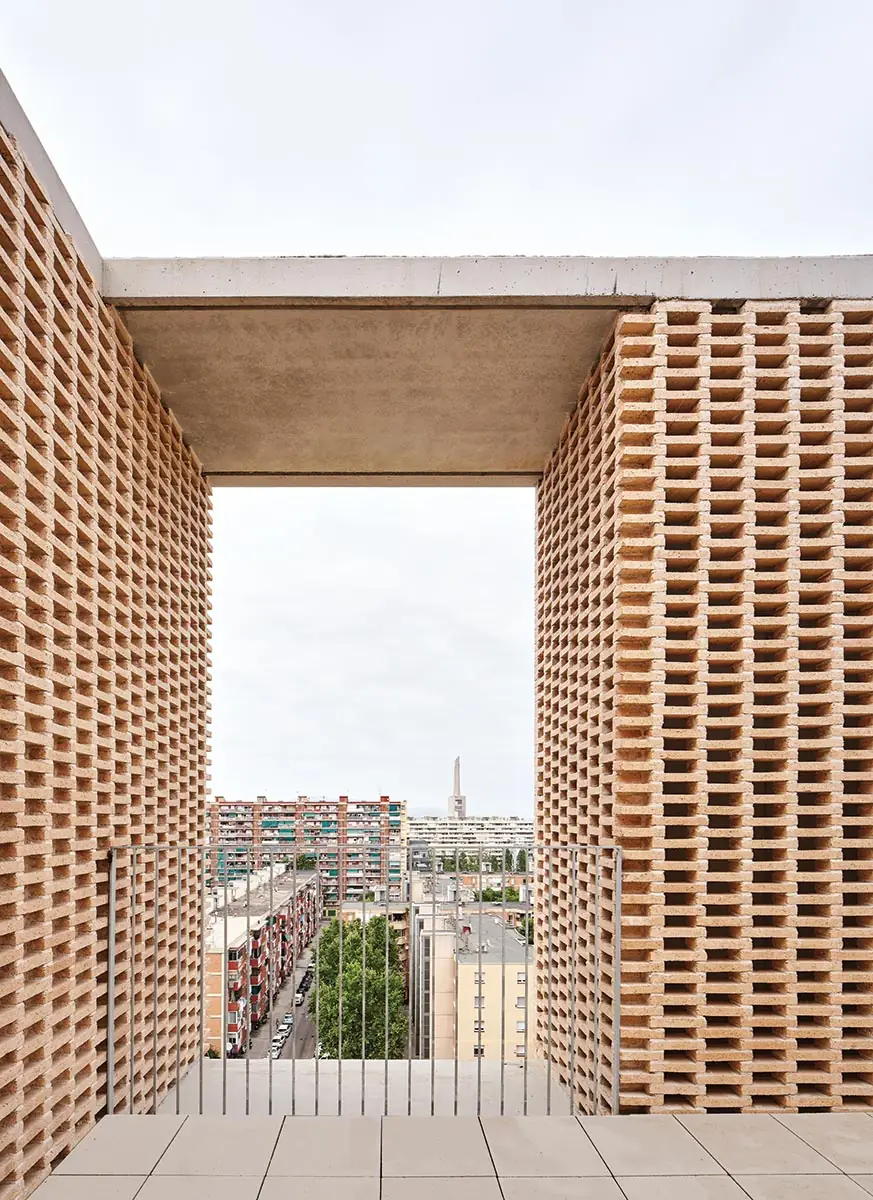
1
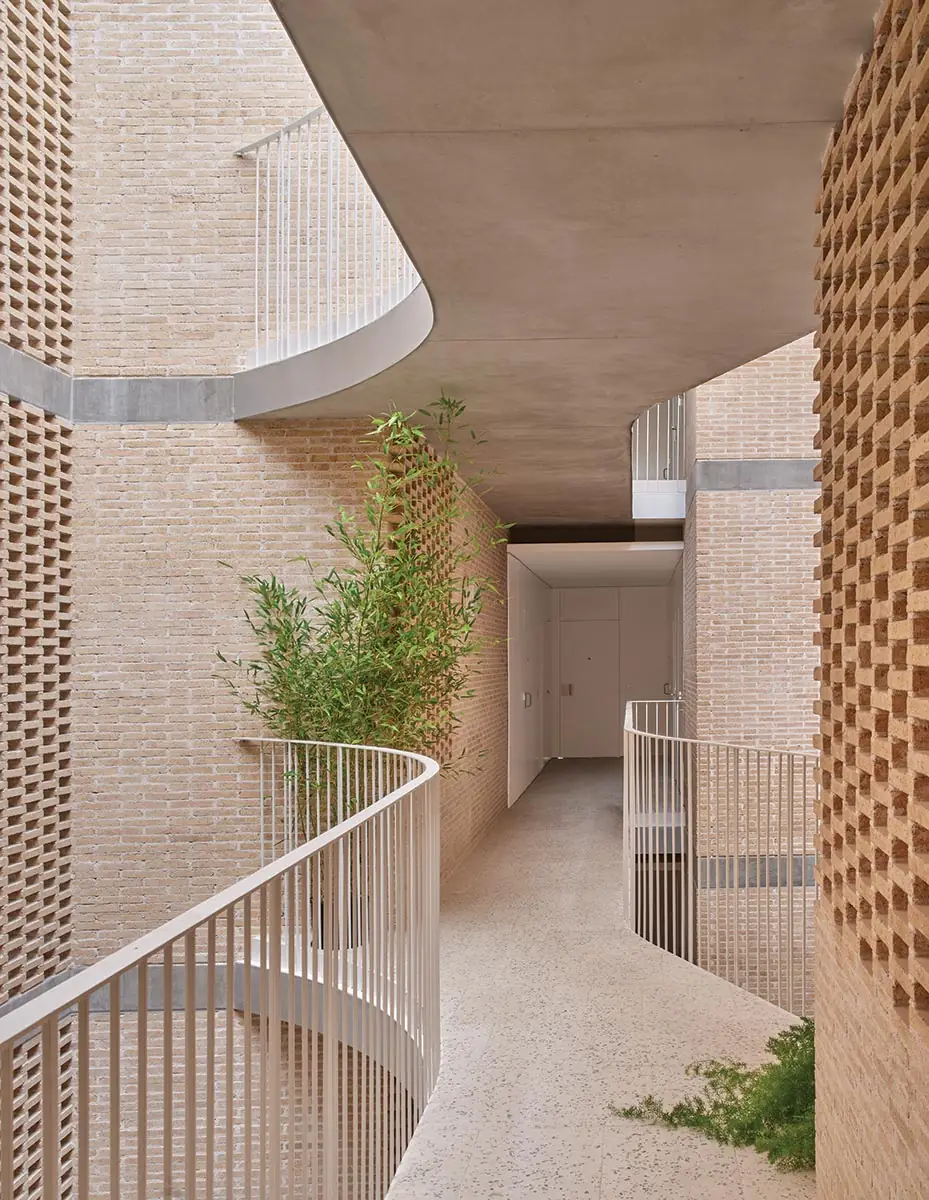
2
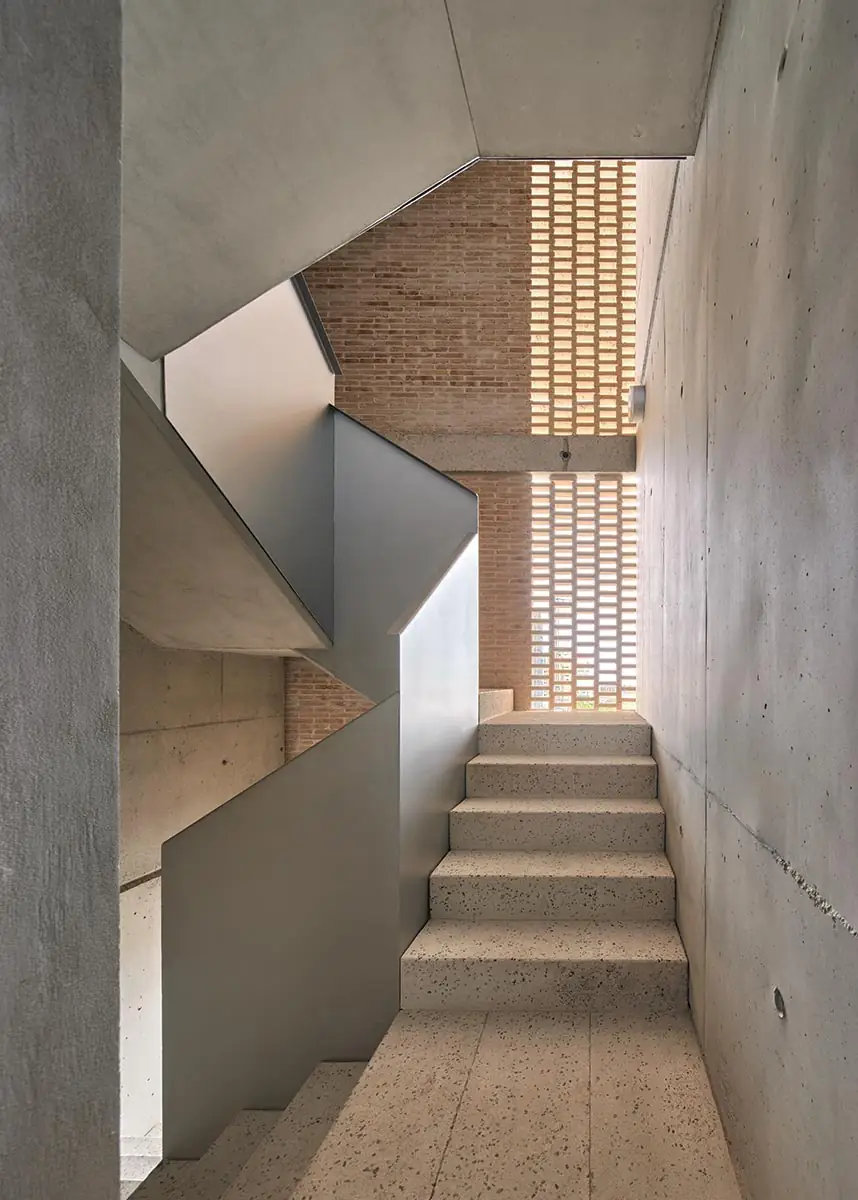
3
Brick lattice on terraces (1), in the atrium (2), and in stairwells (3) stirs airflow. Photos © José Hevia, click to enlarge.
Built for the Municipal Institute of Housing and Renovation, Borrassà’s massing—a five-story bar with a tower rising out of it—was predetermined by zoning. “We asked ourselves: do we treat this building as a block that grows into a tower, or as a tower that morphs into a block?” says Toral. With the surrounding context and environmental factors in mind, the architects opted for the latter.
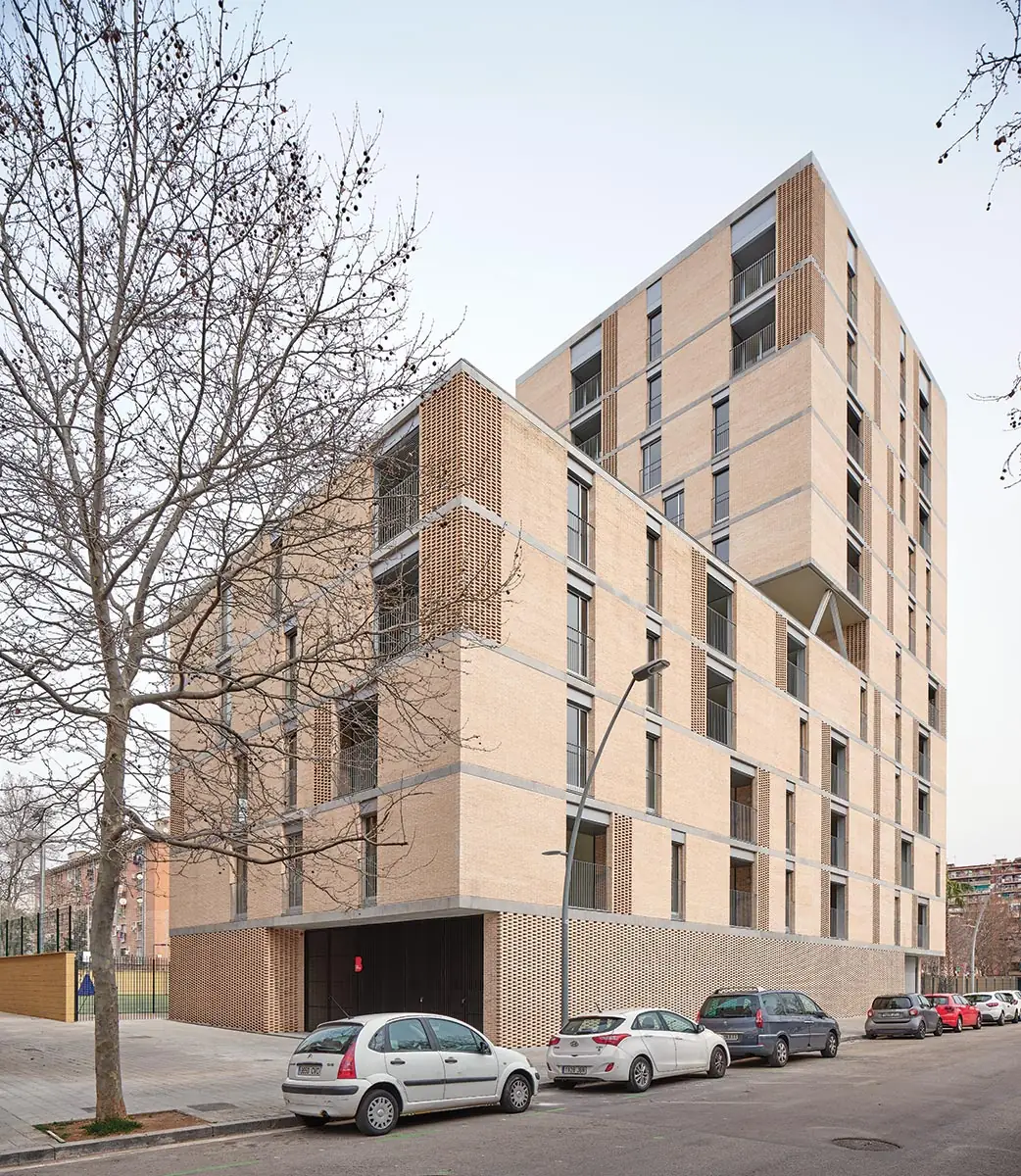
Photo © José Hevia
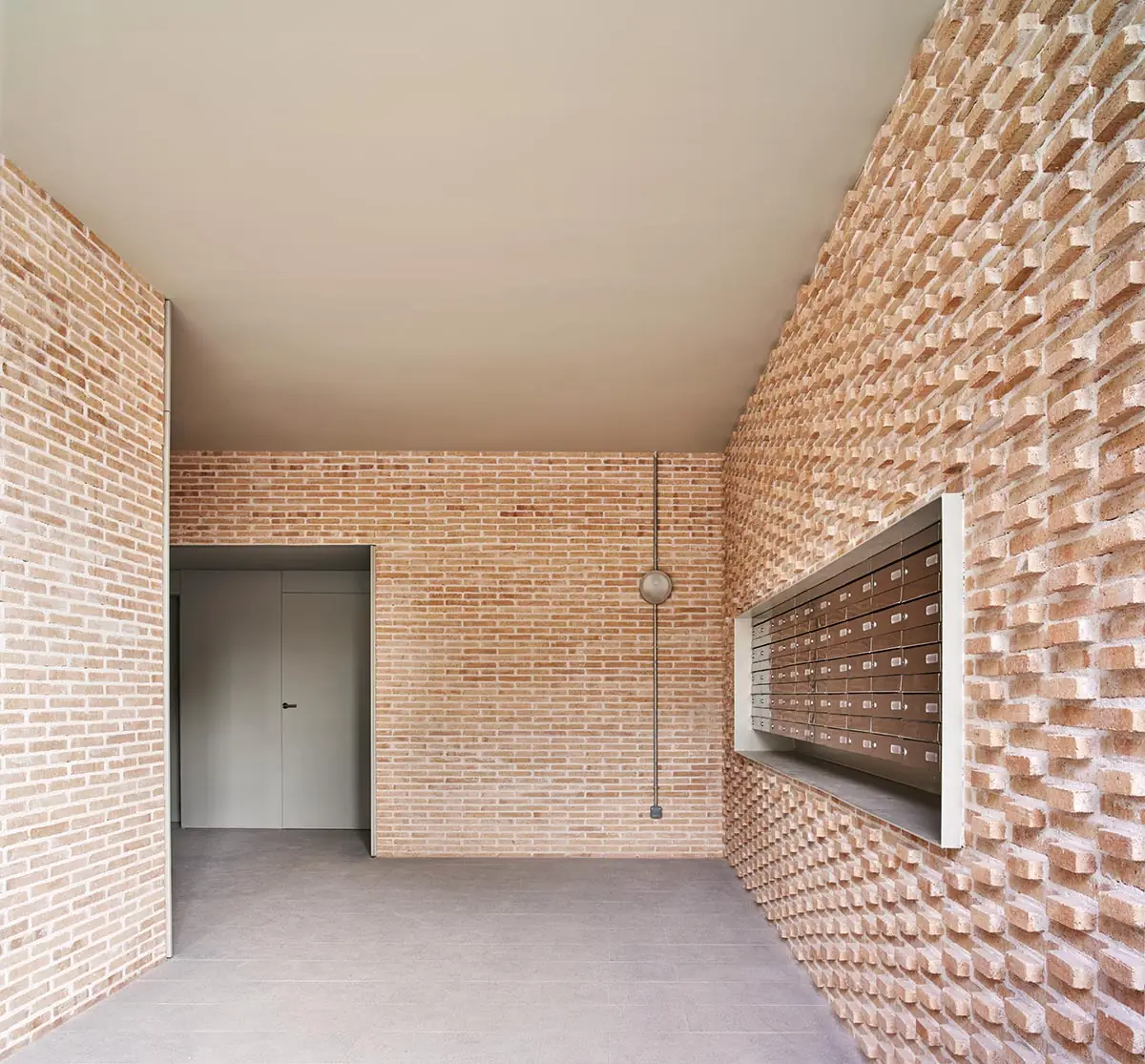
Protruding headers line the entry. Photo © José Hevia
Beginning with the top six stories, Peris+Toral pinwheeled four apartments—each roughly 29½ feet by 23 feet in dimension—around a shared landing, giving each unit a corner of the building and, with it, two exposures for cross ventilation. A pair of circulation cores is sandwiched between them, providing access and egress. This general layout continues downward through the bar-shaped midsection, where Peris+Toral mirrored the pinwheeling arrangement on the opposite end of the building. Stitching the two groupings together is an unexpected top-lit atrium.
“It’s atypical to find these kinds of spaces in social housing,” Toral says, pointing to a few significant examples that informed the design of Borrassà. In particular, an 1851 familistère in Paris proved influential—at Cité Napoléon, two parallel buildings are connected by floating pedestrian streets under a clear glass canopy. At Borrassà, polycarbonate roof panels diffuse sunlight, bathing brick walls and curving walkways in a luminous glow. With grayish white terrazzo and river stones underfoot, and even larger round pebbles (to sit on) designed by industrial-design duo Los Díez, the space carries a certain aura of tranquility.
It isn’t all just for looks—the cavity is designed as a habitable solar chimney. As air warms inside, it rises through the atrium, venting through a series of louvered openings at the top. This causes the atmospheric pressure to fall slightly, forcing in cooler, denser air via an inlet at the bottom of the atrium. The effect is perceptible, and pleasant—on a still, hot August afternoon, the gentle breeze made for a refreshing welcome. An anemometer on the roof closes the louvers when gusts become too strong, preventing the atrium from becoming a wind tunnel. When the weather is cooler, the louvers close as well, holding on to the heat.
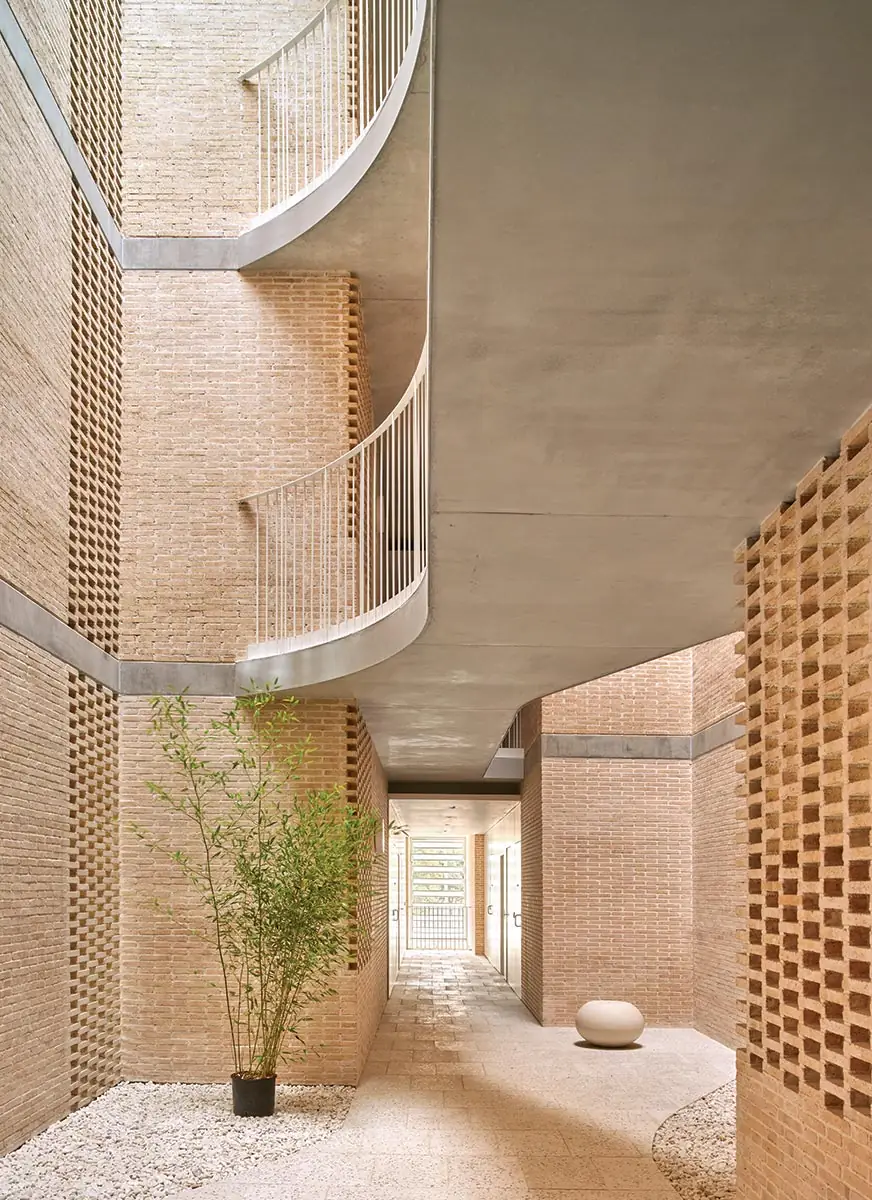
4
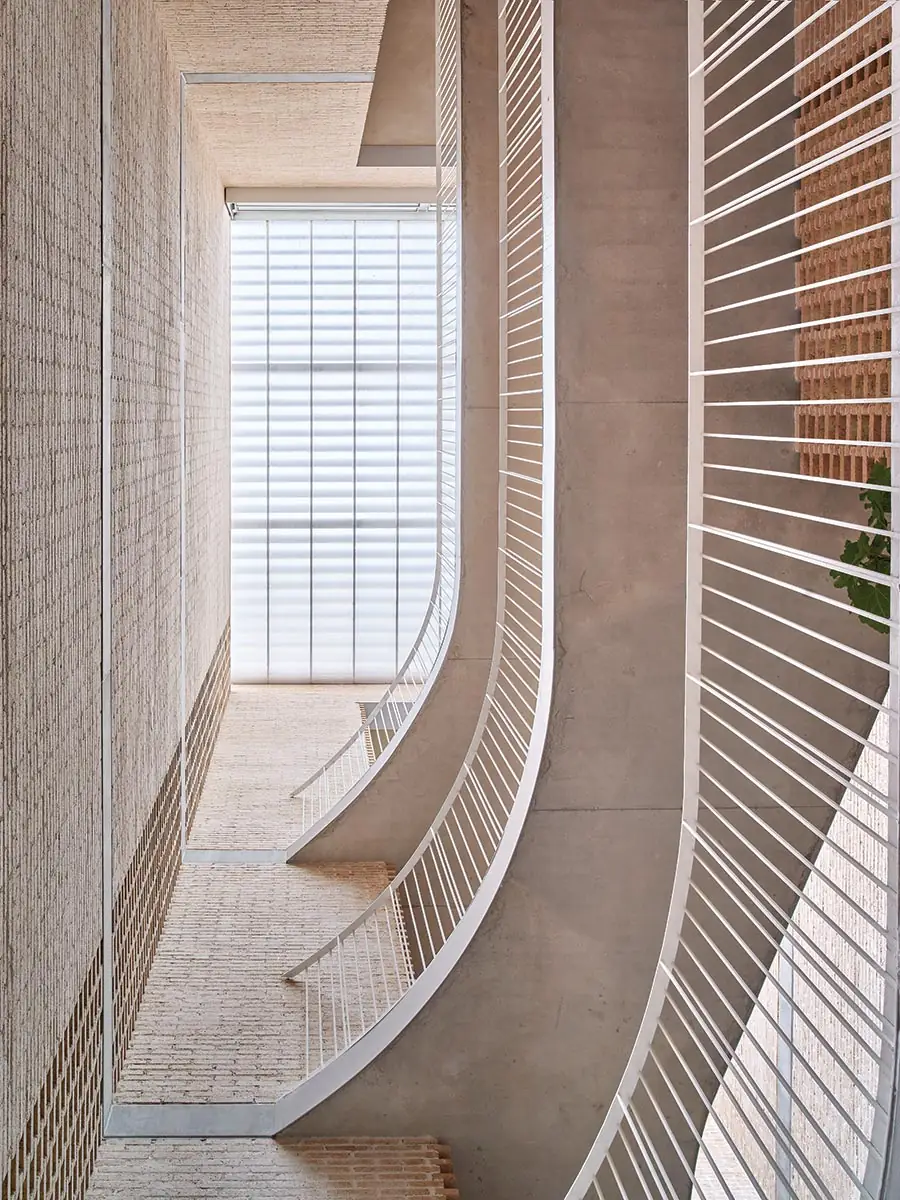
5
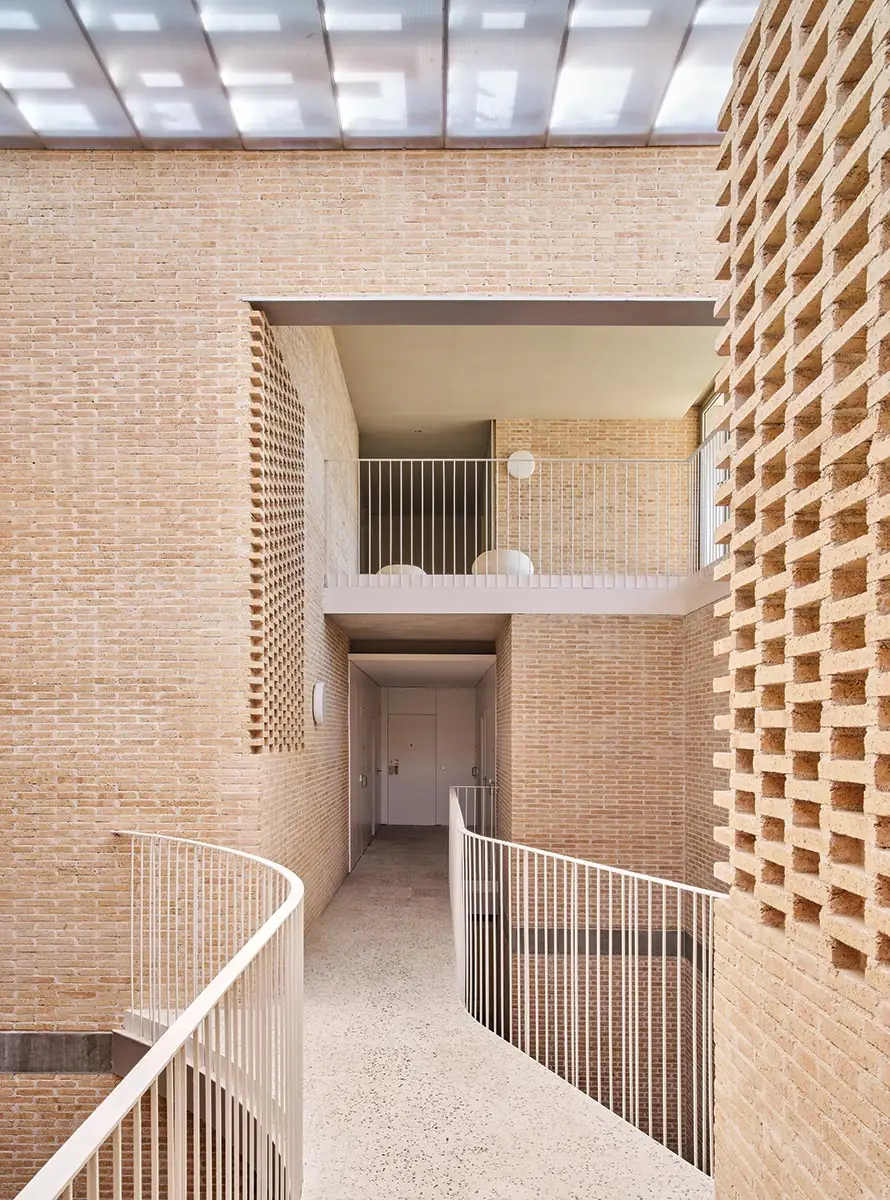
6
Air enters the atrium through an inlet (4), rises toward polycarbonate roof panels (5) and vents at the top (6). Photo © José Hevia
Around the atrium and throughout the building, a handful of units have been sacrificed to make way for social areas. Terraces on the top and the fifth floors offer expansive views of the city and the sea. These can be accessed via elevators or open-air stairwells that spiral around a ribbon of 6-gauge metal plates, folded once at the top to create handrails. On the ground floor, there are locker rooms for people playing sports on the fields abutting the building to the north. Even the below-grade parking garage, through some sectional dexterity along the sidewalk, has access to natural daylight and ventilation. “These elements are important to us, no matter what we’re designing,” Toral says, arguing that it makes such spaces easier to adapt for new uses in the future. It’s clear in walking around the building that environmental and social considerations were foundational, and not an afterthought.
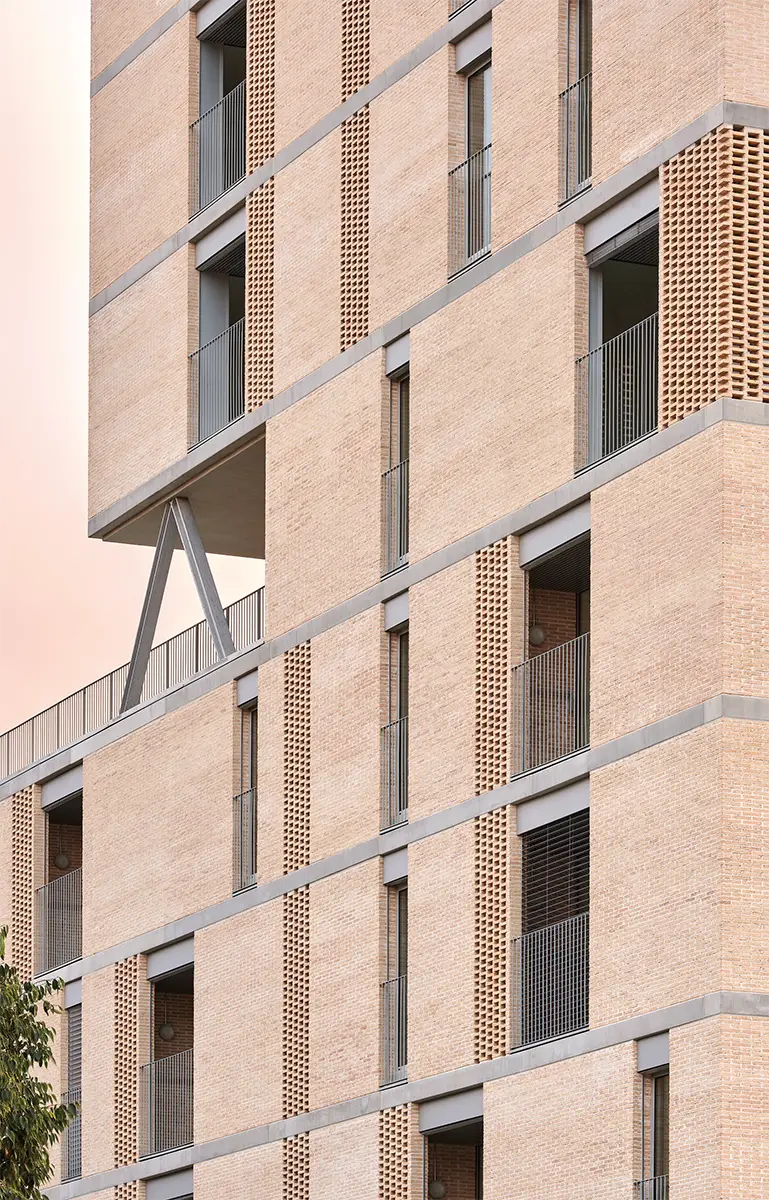
A notch with steel bracing accentuates the fifth-floor terrace. Photo © José Hevia
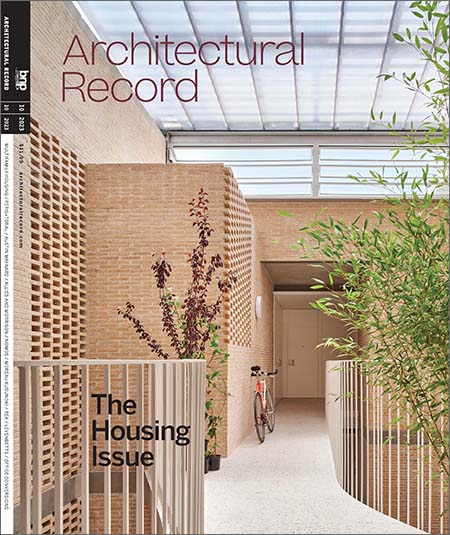
Barcelona is historically a city of stucco and stone—Borrassà stands out for its buff-brick construction. Flush joints with a white mortar keep the walls flat and bright; texture instead derives from the systematized patchwork of solid and permeable walls, windows, and balconies created from four different apartment layouts.
Within each unit, two bedrooms (9 feet by 11¾ feet), a bathroom, and a balcony (10¼ feet by 4½ feet) slide around one another, forming a kitchen and a living room from the space left over. The strategy is similar to the one explored in Peris+Toral’s 85-unit mass-timber social housing complex in Cornellà, although at Borrassà the bedrooms and the living spaces are not the same size. The apartments are low-key and understated, like the simple white-metal thresholds leading into them—but the architects’ deft use of a simple palette and emphasis on bioclimatic principles add special moments. Some bedrooms look out onto balconies, which are partially shaded by brise-soleils of so-called “hit-and-miss” brickwork, while others have windows that cut through the main facade. Units that share a wall with the atrium peer into it, with inward-swinging windows allowing tenants to cash in on the additional airflow.
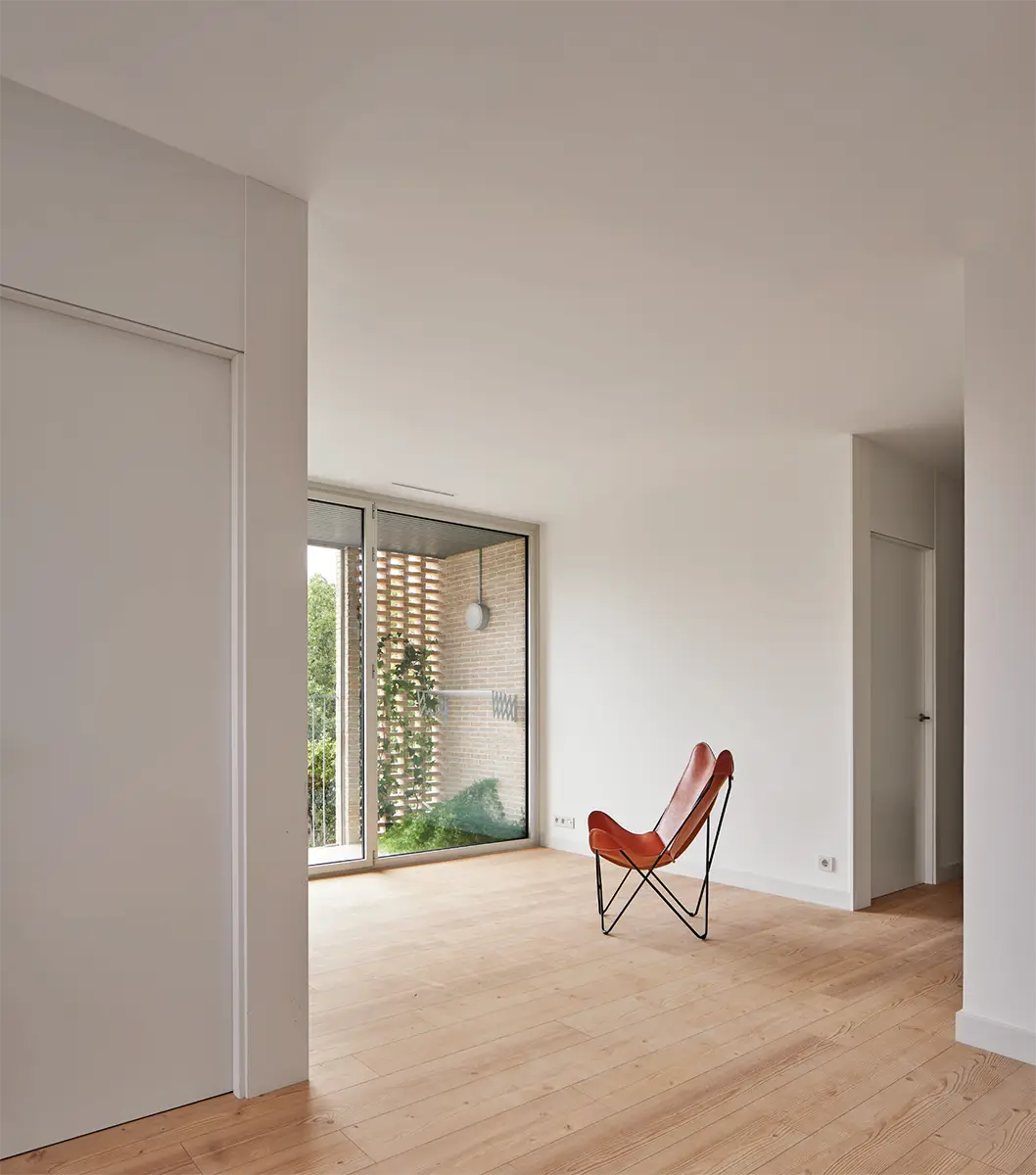
7
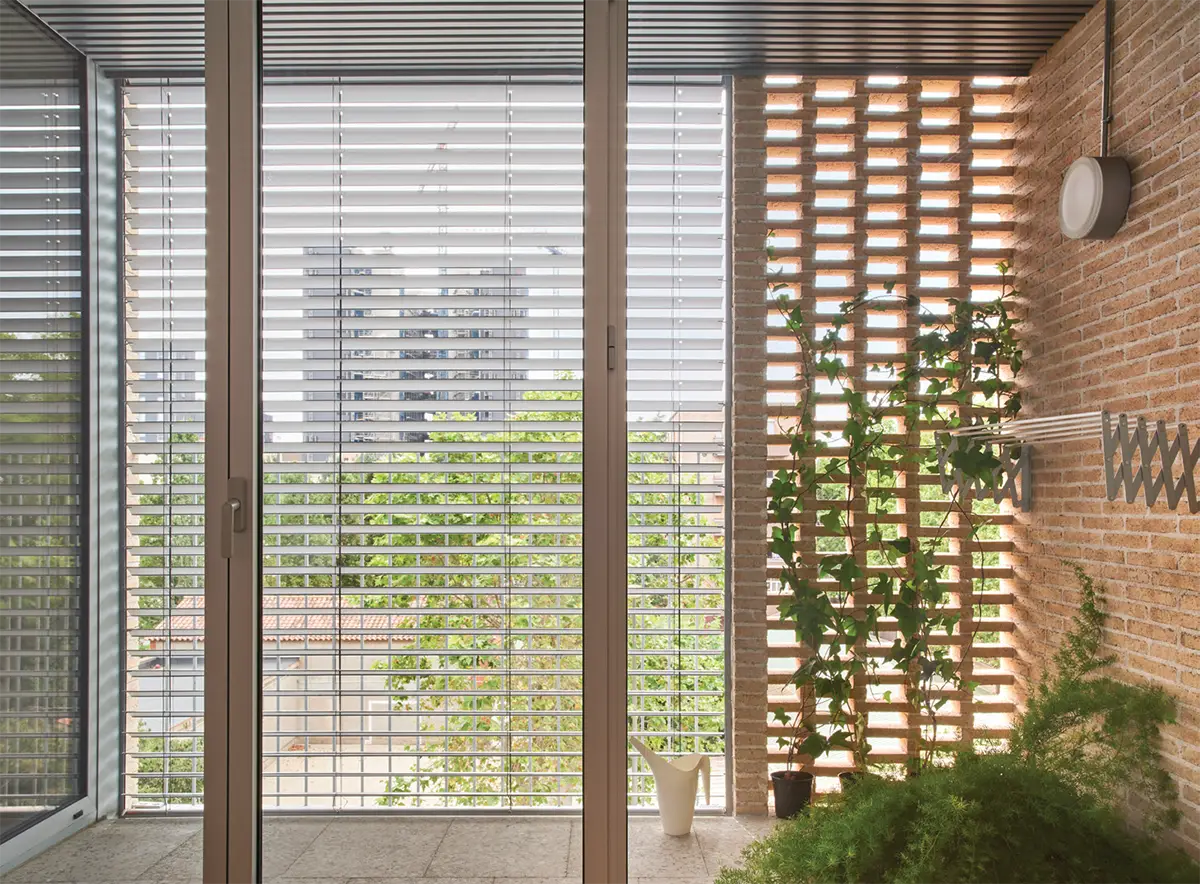
8
Each apartment has its own balcony (7 & 8). Photos © José Hevia, click to enlarge.
A short list of active technologies supplement the heavy-hitting passive-design moves. Photovoltaic arrays on the roof help power water heaters, and graywater is used to flush toilets. There isn’t a single air-conditioning unit in the building.
Despite its scant budget and predetermined massing, Borrassà packs a lot of architectural punch. “Current sustainability standards are too heavily based on point systems. You can do something very, very wrong and then compensate for it by, say, planting trees,” says Toral. “Sure, that might offset some carbon, but it’s not the way to make better and more impactful buildings from the start.” A short walk away, Peris+Toral is wrapping up its largest project to date—a 140-unit apartment building on Carrer de Veneçuela, with dedicated housing for the elderly and refugees. There, an eight-story atrium scales up, and will no doubt repeat, the successes of Borrassà.
Click plans to enlarge
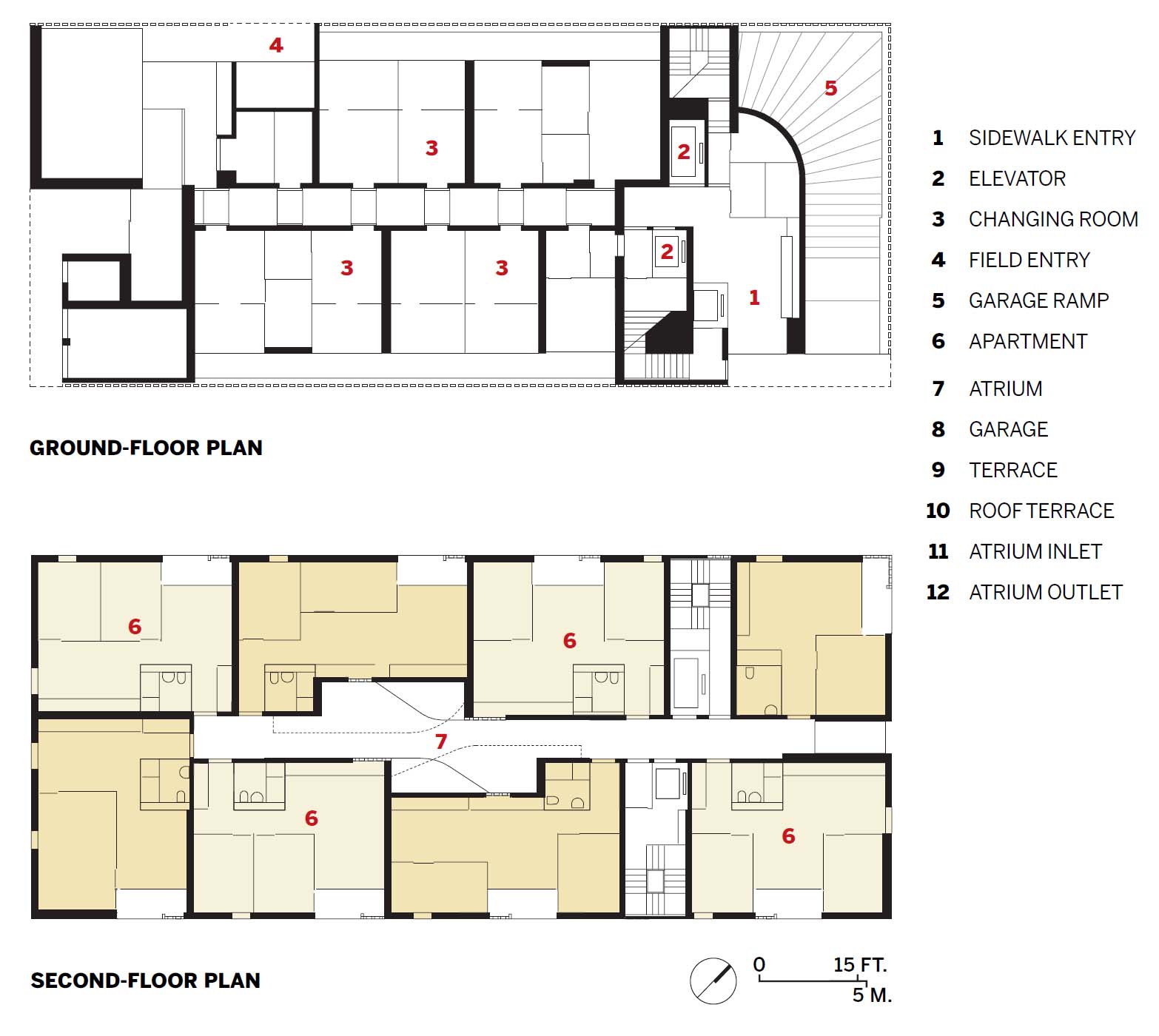
Click plans to enlarge
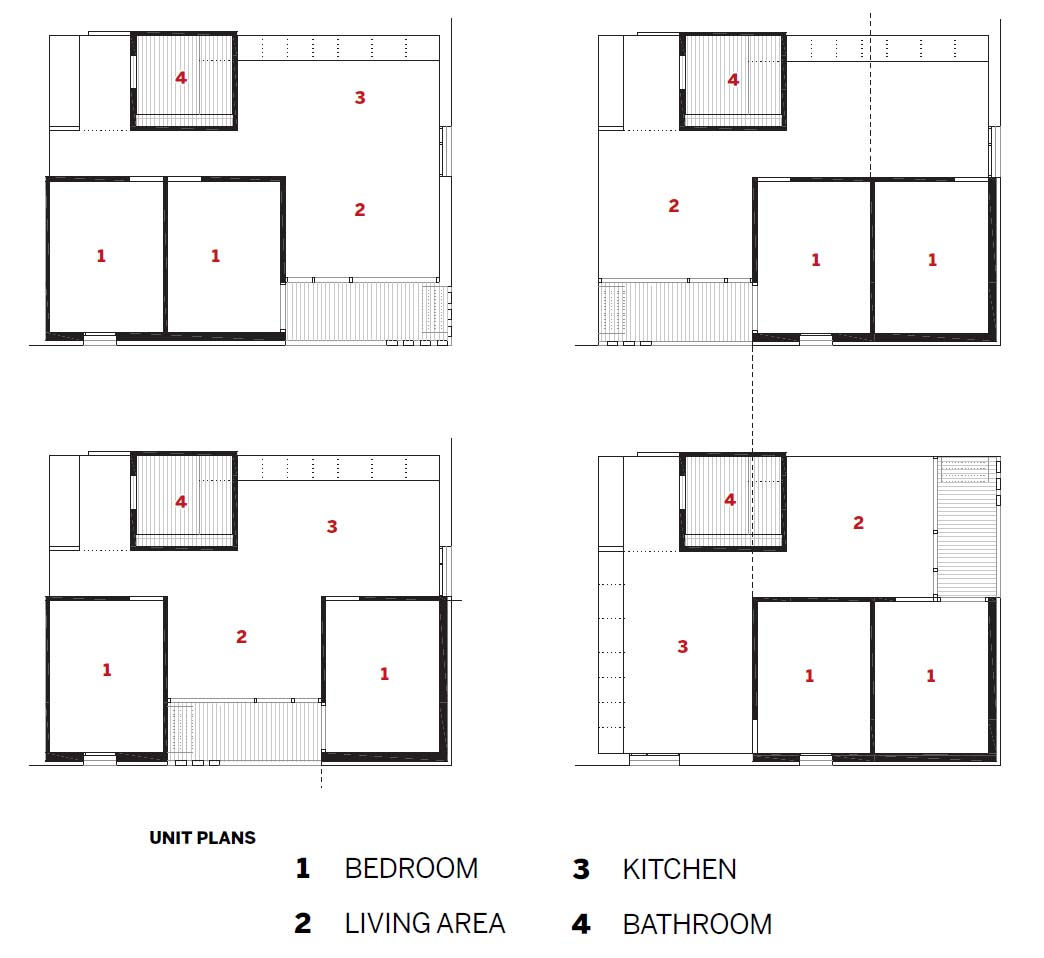
Click diagram to enlarge
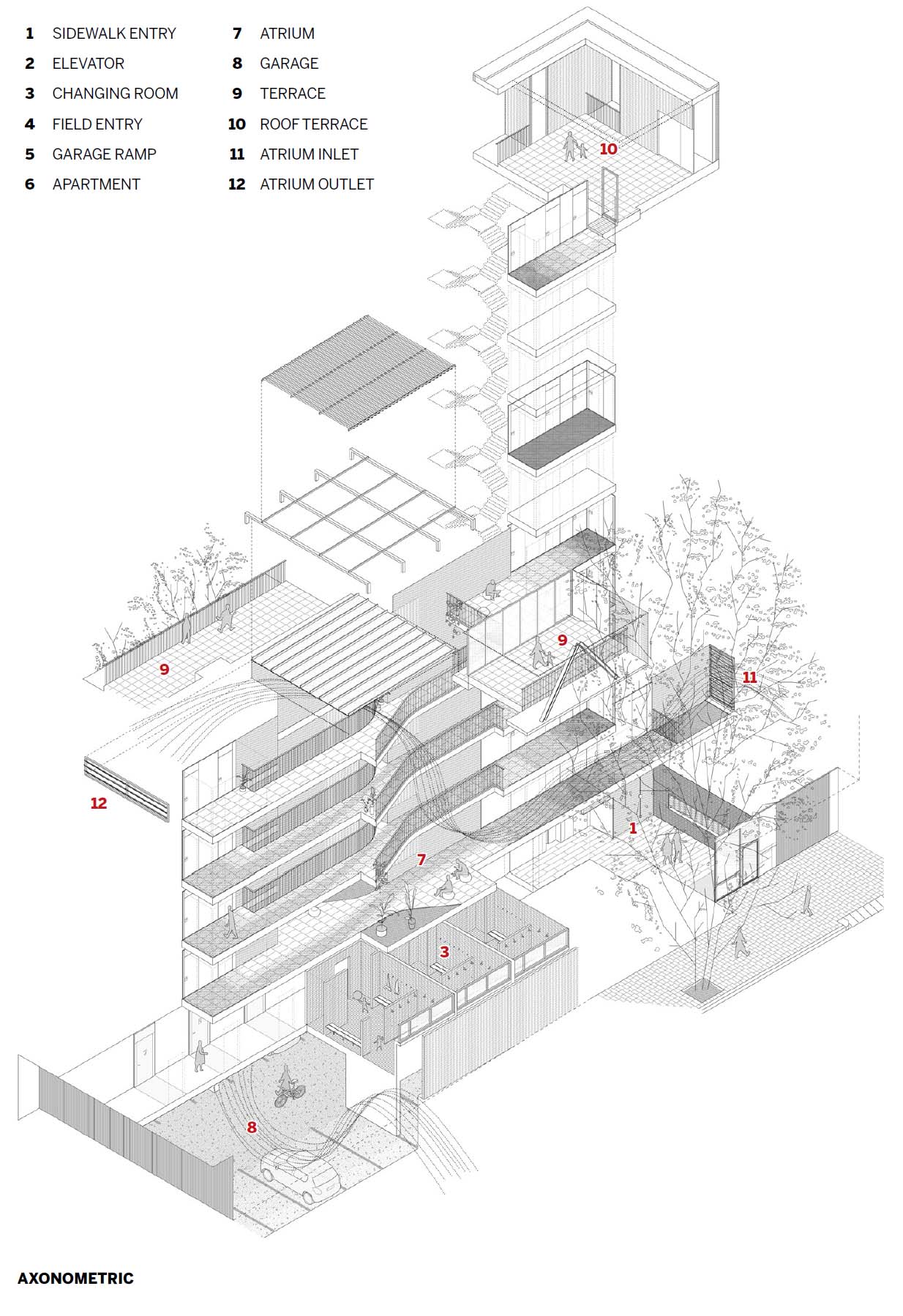
Credits
Architect:
Peris + Toral Arquitectes — Marta Peris, José Toral, principals; Guillem Pascual, Ana Espinosa, Maria Megias, Izaskun González, Cristina Porta, Miguel Bernat, design team
Associate Architect:
L3J — Jaime Pastor Sánchez
Engineer:
L3J Tècnics Associats (m/e/p)
Consultants:
March-Rius Arquitectes Tècnics (survey); Societat Orgànica (environmental)
General Contractor:
Copisa Constructora Pirenaica
Client:
Institut Municipal de L’Habitatge i Rehabilitació de Barcelona
Size:
66,100 square feet
Cost:
$6.9 million
Completion Date:
October 2022
Sources
Masonry:
Cerámica PIERA (brick); JULIÁN ARUMÍ (precast concrete)
Windows:
Cortizo, UIN2 (metal frame); Vidresponent (glazing); Aislux Catalunya (skylights)
Doors:
Andreu (metal); Bamar Puertas (wood and fire-control)
Lighting:
Hep Tech, Novalux Lighting, Lluria Lighting System, Mean Well Enterprises
Finishes:
Financiera Maderera (millwork); REVETÓN (anti-carbon paint); Invicto Química (anti-graffiti paint); Topcret Tecnología en Revestimientos (microcement); Pavimentos URBINA (terrazzo)
Hardware:
Tesa (locksets); JNF (closers/pulls)
Energy:
Antylop (energy-management system); LONGi (solar panels)
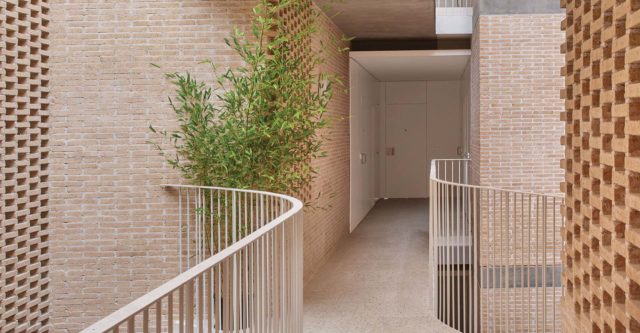


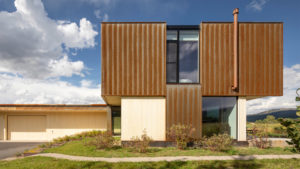
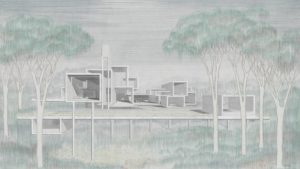
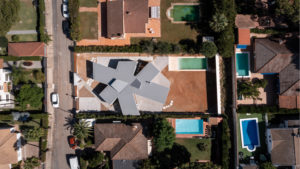
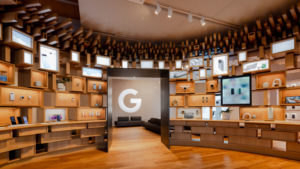
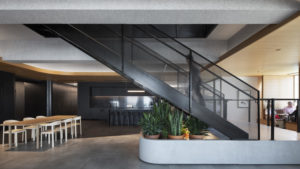
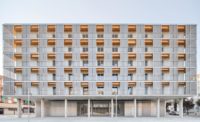
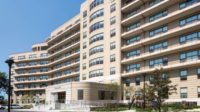
Post a comment to this article
Report Abusive Comment